Hello fellow e-commerce entrepreneurs! I’m Janson, CEO of ASG Dropshipping. Having navigated the cross-border e-commerce landscape for many years, I’ve witnessed its entire journey from inception to prosperity. From early trial-and-error explorations to now leading the ASG team in providing one-stop cross-border e-commerce dropshipping services to clients worldwide.
I have a dream – that one day, people globally can leverage China’s supply chain advantages to conduct business online with ease and joy, creating their own consumer brands. It’s this dream that has driven me to write this comprehensive Dropshipping guide, sharing my years of accumulated experience and insights with you.
In today’s e-commerce world, Dropshipping, as a low-investment, high-flexibility business model, has captured the attention of countless entrepreneurs. However, statistics show that over 80% of Dropshipping novices give up in their first year. Why? Because they lack systematic guidance and strategic thinking. Today, I will unveil the core secrets to successful Dropshipping, helping you avoid common pitfalls and build a truly sustainable e-commerce business.
Whether you’re a beginner just starting or an e-commerce practitioner seeking a breakthrough, this guide will provide you with a clear roadmap and practical strategic tools. Let’s embark on this transformative journey from Dropshipping novice to successful entrepreneur together!
The Current State and Development of the Dropshipping Business
Dropshipping, as a low-risk entrepreneurial model, has attracted numerous ambitious individuals. However, according to the latest data, while the global Dropshipping market is projected to reach $557 billion by 2025, a staggering 90% of Dropshipping entrepreneurs face failure within their first year. This stark contrast reveals a critical fact: while Dropshipping has a low barrier to entry, success is by no means easy.
Dropshipping vs. Traditional Retail:
- • No need for upfront inventory investment, significantly reducing startup costs.
- • Product range is virtually limitless, allowing for rapid testing of different product lines.
- • Geographical freedom, enabling operations from anywhere with an internet connection.
- • High operational flexibility, allowing for swift strategy adjustments based on market feedback.
Differences from Other E-commerce Models:
Traditional e-commerce requires managing inventory, packaging, and shipping independently. Dropshipping, on the other hand, outsources these aspects to suppliers, allowing entrepreneurs to focus on marketing and customer service. Compared to the Amazon FBA model, Dropshipping avoids warehousing fees but may face greater challenges in product quality control and delivery times.
Pro-tip: Dropshipping’s greatest advantage lies in its “test-learn-adjust” cycle, which can be incredibly fast and cost-effective. Leverage this feature to test multiple products or markets within 3-6 months without incurring significant financial risk.
Print-on-Demand (POD) – A Special Form of Dropshipping
Print-on-Demand is a special branch of Dropshipping, particularly suited for entrepreneurs with design talent but lacking product manufacturing capabilities. With the POD model, you can add your designs to base products like T-shirts, hats, mugs, etc., which are only produced after a customer places an order.
Data from 2025 shows the POD market growing at an annual rate of 15%, driven by rising consumer demand for personalized and unique products. Platforms like Printful, Printify, and Gelato have become leaders in this field, offering entrepreneurs a rich selection of products and convenient integration tools.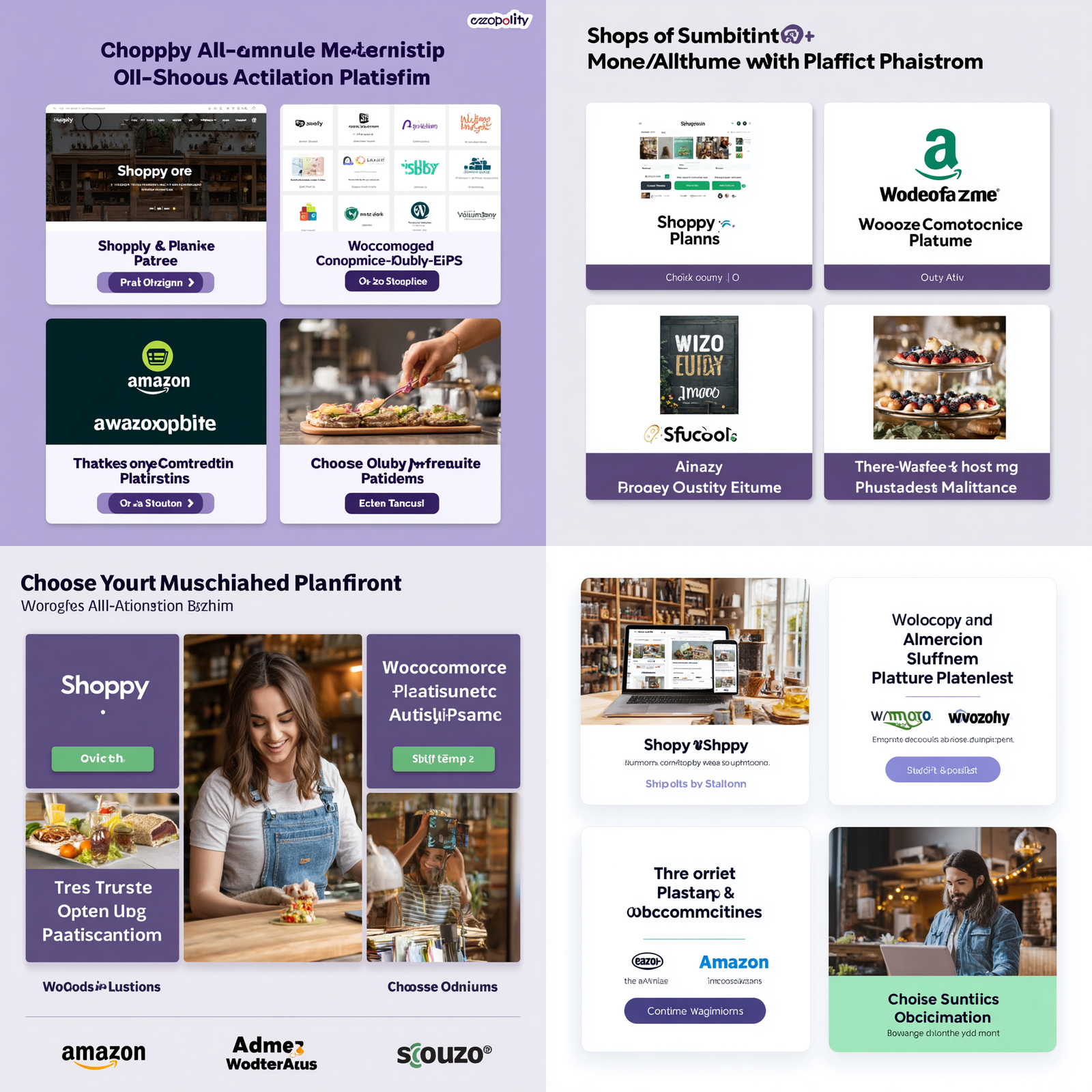
Debunking Common Misconceptions About Dropshipping
Misconception One: The Market is Already Saturated
Many believe the Dropshipping market is saturated, leaving no new opportunities. In reality, the e-commerce market is still rapidly growing, with global e-commerce sales projected to reach $7.4 trillion by 2025. The key is to find untapped niche markets or offer a unique value proposition for existing products.
Pro-tip: Don’t chase trending products. Instead, look for “long-tail” products with stable demand but relatively less competition. These products often have higher profit margins and more loyal customer bases.
Misconception Two: Dropshipping is Passive Income
Many marketing materials portray Dropshipping as an automated business where you “make money while you sleep.” In truth, successful Dropshipping requires continuous effort, especially in the following areas:
- • Product research and selection
- • Supplier relationship management
- • Customer service and communication
- • Marketing strategy optimization
- • Website maintenance and updates
According to a 2025 survey, successful Dropshipping store owners work an average of 40-50 hours per week, especially in the initial stages of their business.
Misconception Three: Profit Margins Are Always High
While products in certain niche markets can achieve profit margins of over 50%, most Dropshipping products have margins between 15-30%. Considering advertising costs, platform fees, refunds, and customer acquisition costs, net profits are often lower.
Data from 2025 indicates that the average net profit margin for successful Dropshipping stores is around 15-20%, while very successful stores might reach 25-30%. This means you need to achieve considerable sales volume to generate substantial income.
Pro-tip: Don’t just focus on the profit margin of a single order; focus on Customer Lifetime Value (CLTV). Through effective email marketing and loyalty programs, you can significantly increase the overall value of each customer.
Key Platform Choices for Dropshipping
Choosing the right platform is crucial before starting Dropshipping. Currently, there are two main categories of platforms on the market:
Standalone Store Platforms:
- • Shopify – The most popular Dropshipping platform in 2025, with over 2 million active merchants.
- • WooCommerce – A free WordPress-based solution, suitable for entrepreneurs with stronger technical skills.
- • BigCommerce – Enterprise-level features, suitable for merchants with expansion plans.
Third-Party Marketplace Platforms:
- • Amazon – Huge traffic but fierce competition, higher commission rates (typically around 15%).
- • eBay – Suitable for specific product categories, relatively lenient policies.
- • Facebook Marketplace – Obvious localization advantages, but policies have tightened recently.
- • Etsy – Particularly suitable for handmade items and POD products, but requires products to have a certain uniqueness.
Pro-tip: Don’t put all your eggs in one basket. Successful Dropshipping merchants often operate both a standalone store and 1-2 third-party marketplace platforms to diversify risk and maximize exposure to potential customers.
In the upcoming sections, we will delve deeper into how to build a unique brand strategy, establish an online presence, and set up a high-conversion sales-oriented store. By mastering these core skills, you will significantly increase your chances of success in the Dropshipping field.
Let’s start with brand building, as it is the foundation and soul of the entire Dropshipping business.
Building a Unique Brand Strategy
Brand Building Fundamentals
In the ocean of Dropshipping, operating without a brand is like sailing a ship without a compass. Data from 2025 shows that Dropshipping stores with brand recognition have customer loyalty 3 times higher and repurchase rates 2.5 times higher than unbranded stores.
Product Positioning (Niche Market Selection)
Choosing the right niche market is the first step to success. According to the latest research, the following areas show strong growth potential in 2025:
- • Sustainable Living Products – Eco-friendly home goods, biodegradable packaging, etc.
- • Pet Health and Wellness – Special dietary supplements, smart monitoring devices, etc.
- • Home Office Optimization – Ergonomic equipment, productivity tools, etc.
- • Outdoor Lifestyle – Portable gear, multifunctional tools, etc.
- • Personal Health Monitoring – Non-medical grade health tracking devices, etc.
Market Demand Analysis Methods:
- 1. Trend Research Tools: Use tools like Google Trends, Exploding Topics, and Trend Hunter to identify rising trends.
- 2. Keyword Analysis: Utilize tools like SEMrush or Ahrefs to analyze search volume changes.
- 3. Social Media Monitoring: Follow emerging topics on platforms like Instagram, TikTok, and Pinterest.
- 4. Industry Reports: Study industry forecasts published by professional market research firms.
Pro-tip: Look for “pain-point intensive” niche markets. Consumers in these markets face clear problems and are willing to pay a premium for solutions. For example, pet allergy solutions, assistive tools for children with special needs, etc.
Product Profitability Potential Assessment Criteria:
- 1. Price Point: Ideal retail price between 70, with a cost price between 25.
- 2. Volume and Weight: Lightweight and compact to reduce shipping costs.
- 3. Seasonality: Products with stable year-round demand are preferable to highly seasonal products.
- 4. Competition Level: Google Ads Cost Per Click (CPC) between 3 indicates moderate competition.
- 5. Problem-Solving Ability: Products that solve a clear problem are more valuable than purely decorative items.
Building a Unique Brand Strategy: How to Stand Out in a Competitive Market?
In my years of Dropshipping experience, I’ve found that the most successful stores share a common trait: they don’t just sell products; they create a brand that consumers want to connect with emotionally. According to the latest research, Dropshipping stores with brand recognition have customer loyalty 3 times higher and repurchase rates 2.5 times higher than unbranded stores. This isn’t a coincidence; it’s the result of strategy.
Product Positioning: Find Your “Blue Ocean” Market
Product positioning is the cornerstone of your entire brand strategy. A fatal mistake I often see new entrepreneurs make is trying to sell “everything,” only to end up selling nothing well. Remember, in the Dropshipping world, being a “jack of all trades, master of none” is the enemy of success.
How to Conduct Effective Market Demand Analysis:
- 1. Data-Driven Trend Research: I spend at least 3 hours each week using Google Trends, Exploding Topics, and social media monitoring tools to identify emerging trends. For example, in early 2025, I noticed a 78% year-over-year increase in searches for “sustainable home goods,” which became the inspiration for a new product line.
- 2. Competitor Analysis: Don’t just look at the big players. Study small to medium-sized successful stores with annual revenues between 500,000. They often better reflect real market opportunities and viable strategies.
- 3. Product-Market Fit Testing: Before fully committing, I test product concepts with a small audience, typically through social media polls or small ad spends (no more than $100 per concept) to validate demand.
Pro-tip: Look for “high emotional investment” niche markets. People are willing to pay a premium for things they care deeply about (like pet health, family safety, personal hobbies), and customer acquisition costs in these areas are often lower.
Practical Criteria for Assessing Product Profitability Potential:
- • Profit Margin Assessment: My rule of thumb is that product cost should not exceed 30% of the selling price to maintain a healthy profit after deducting advertising and platform fees.
- • Supply Chain Stability: Ensure at least 3 reliable suppliers can provide the same or similar products to avoid single-source risk.
- • Shipping Feasibility: Products weighing over 2kg or that are overly bulky usually lead to excessive shipping costs unless you can find local suppliers.
- • Seasonality Consideration: I prefer products with demand fluctuations of no more than 30% to maintain stable cash flow throughout the year.
Among the multiple Dropshipping stores I’ve created, those focusing on solving specific problems (e.g., automatic watering systems for succulents, ergonomic accessories for remote workers) tend to perform best, with average conversion rates 40% higher than general products.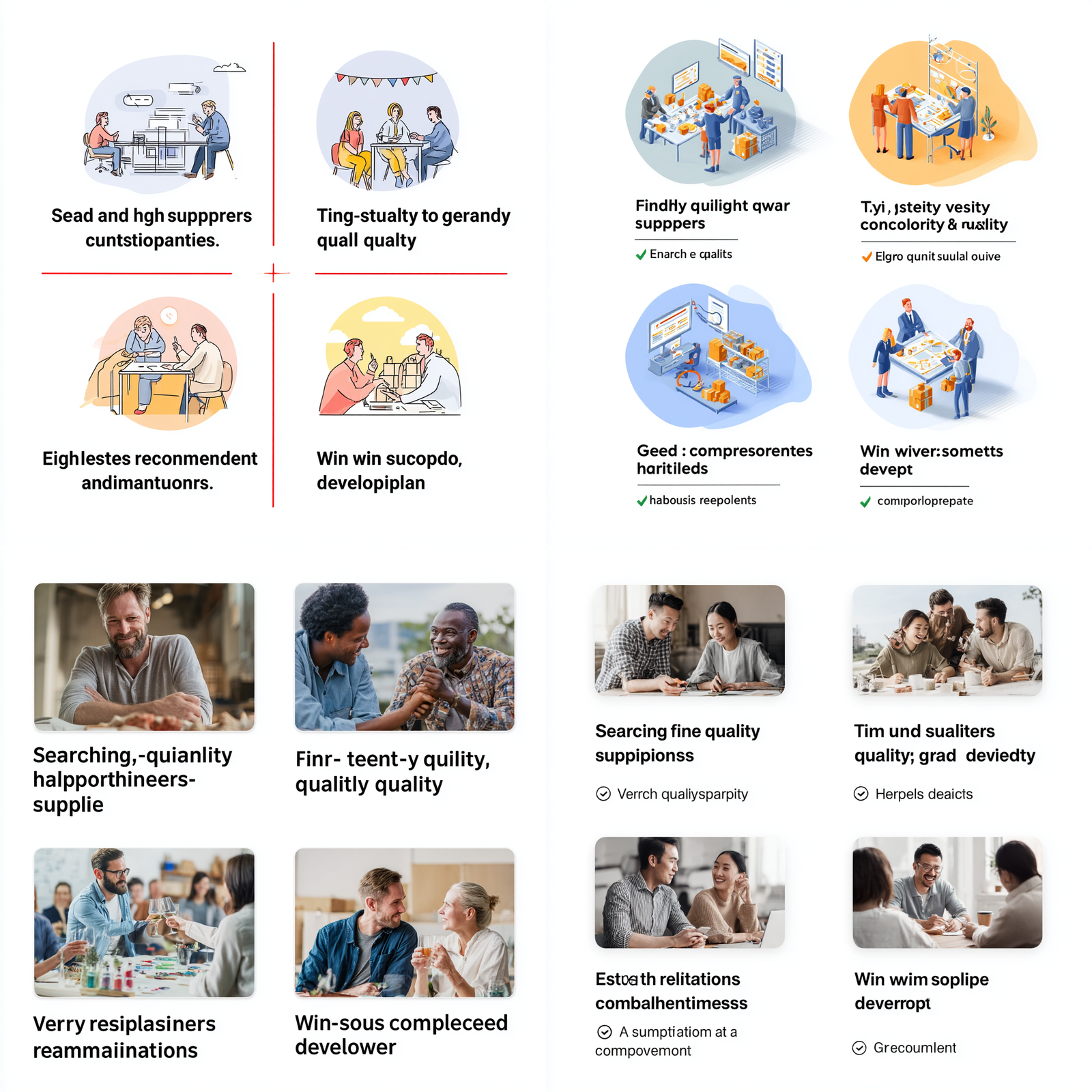
Target Audience Analysis: Understand Your Ideal Customer
If product positioning is the skeleton of your brand, then target audience analysis is what breathes life into that skeleton. Many Dropshipping entrepreneurs make the mistake of assuming their product is “for everyone”—a shortcut to mediocrity.
Building Detailed Customer Personas:
- 1. Demographic Basics: Age, gender, income level, education, geographic location, etc.
- 2. Psychographics: Values, lifestyle, pain points, aspirations, purchasing motivations.
- 3. Behavioral Patterns: Shopping habits, brand loyalty, price sensitivity, decision-making process.
I usually create 2-3 primary customer personas and give each a name, like “Working Mom Jenny” or “Tech Enthusiast Thomas.” This might seem simple, but it makes your marketing decisions much more targeted.
Real-World Example: When I ran a store specializing in sustainable kitchenware, I found my core customer group was urban professional women aged 30-45, highly concerned about environmental issues, and willing to pay a premium for products aligning with their values. Knowing this, I adjusted my product descriptions to emphasize eco-friendly materials and positive environmental impact, which increased conversion rates by 27%.
Pro-tip: Don’t rely solely on assumptions; communicate with real customers. I regularly send personalized surveys to my top 10% high-value customers, offering small discount coupons in return. This firsthand information is often more valuable than any market research.
Brand Identity System: Create a Memorable Brand Experience
A brand is more than just a logo or color scheme; it’s an all-encompassing experience. In Dropshipping, a strong brand identity system can transform ordinary products into desirable lifestyle symbols.
Building a Consistent Brand Identity System:
- 1. Visual Elements:
- • Logo Design (simple, recognizable, adaptable to various sizes)
- • Color Palette (typically 3-5 colors reflecting brand personality)
- • Typography System (heading and body fonts, ensuring readability and consistency)
- • Image Style (consistent aesthetic for product photography and social media visuals)
- 2. Verbal Elements:
- • Brand Voice (professional, friendly, humorous, authoritative, etc.)
- • Core Messaging (brand promise, mission statement, value proposition)
- • Proprietary Terminology (creating brand-specific vocabulary to enhance recognition)
- 3. Emotional Elements:
- • Brand Story (founding background, mission, values)
- • Customer Experience Design (consistent experience from browsing to after-sales)
A common mistake is using different visual styles and tones across various platforms, resulting in confused brand perception. I now use a brand guide to ensure a consistent brand experience, whether it’s on the website, social media, or email.
Practical Tool Recommendations:
- • Color Palettes: Coolors.co (free)
- • Logo Design: Canva Pro (paid but worthwhile) or Looka (suitable for startup budgets)
- • Brand Guide Templates: Figma (has free options)
Pro-tip: Even for a Dropshipping business, invest in high-quality product photography. I usually order samples from suppliers and then hire a local photographer for professional shots. This investment (typically 200 per product) yields significant returns in boosting conversion rates, averaging a 15-25% increase.
Establishing Online Influence: How to Attract and Retain Your Target Audience?
In the Dropshipping world, traffic is the lifeline. But not all traffic is valuable—we need high-quality, highly relevant traffic. Building an online influence is not just about acquiring visitors; it’s about building a loyal community of followers who will become your brand ambassadors and repeat customers.
Competitor Analysis: Learn, Adapt, and Surpass
My advice is “don’t reinvent the wheel, build a better one.” Competitor analysis is a goldmine overlooked by many Dropshipping entrepreneurs, yet it can save you months of trial-and-error and thousands of dollars in advertising budget.
Comprehensive Competitor Analysis Framework:
- 1. Identify True Competitors:
- • Direct Competitors (stores selling the same products)
- • Indirect Competitors (stores solving the same problem in different ways)
- • Industry Leaders (may not be direct competitors but are successful examples worth studying)
- 2. In-Depth Analysis of Key Aspects:
- • Product Strategy: Product line breadth, depth, price points, unique selling propositions.
- • Marketing Channels: Where do they get traffic? Paid ads, SEO, social media, influencer collaborations?
- • Content Strategy: Blog topics, video styles, social media post frequency and types.
- • Customer Interaction: Comment reply style, after-sales service methods, community building strategies.
- • Website Experience: Navigation structure, product presentation, checkout process, use of trust signals.
A practical technique is to create a “Competitor Tracking Sheet,” recording their new products, promotions, and content updates weekly. This helps me identify seasonal trends and successful strategies while avoiding their mistakes.
Practical Tool Recommendations:
- • SimilarWeb (understand traffic sources and user behavior)
- • SEMrush or Ahrefs (analyze keyword strategies and backlinks)
- • Facebook Ad Library (view competitors’ ad creatives and targeting strategies)
Pro-tip: Don’t just focus on large competitors. Small to medium-sized but rapidly growing competitors often have more innovative strategies and flexible operating models, deserving special attention. I once learned extremely valuable product presentation techniques from a competitor with only $20,000 in monthly sales but a 200% growth rate.
Reaching Your Target Audience: Find and Attract Your Ideal Customers
Understanding your audience is one thing; successfully reaching them is another. In today’s fragmented media environment, choosing the right platforms and content strategy is crucial.
Platform Selection Strategy:
Based on my experience, different types of products are suited for different platforms:
- 1. Visually Appealing Products: Instagram, Pinterest, and TikTok
- • Examples: Fashion accessories, home decor, beauty products
- • Strategy: High-quality product showcases, lifestyle usage scenarios, user-generated content
- 2. Problem-Solving Products: YouTube, Blogs, Facebook
- • Examples: Kitchen tools, health products, productivity tools
- • Strategy: Educational content, “how-to” videos, problem-solving demonstrations
- 3. Niche Professional Products: LinkedIn, Professional Forums, Vertical Communities
- • Examples: Office equipment, specialized tools, B2B products
- • Strategy: Expert endorsements, case studies, technical comparisons
A mistake I once made was trying to manage 6 social media platforms simultaneously, resulting in mediocre performance on each. My advice now is: focus on 1-2 platforms that best suit your product and audience first, and then consider expanding once you’ve achieved a certain scale.
Three-Tier Content Marketing Architecture:
- 1. Attraction Layer Content (Top of Funnel):
- • Purpose: Increase brand awareness, attract new audiences.
- • Format: Entertaining short videos, posts solving common problems, participation in trending topics.
- • Example: One of my outdoor gear stores created a “60-Second Wilderness Survival Tips” short video series. Each video showcased the practical application of our products and received, on average, 10 times more shares than non-paid videos.
- 2. Consideration Layer Content (Middle of Funnel):
- • Purpose: Build trust, demonstrate expertise.
- • Format: Product comparisons, in-depth guides, FAQs.
- • Example: The “Ultimate Guide to Kitchen Tool Materials” created for my kitchenware store became an industry reference, not only increasing conversion rates but also bringing in substantial organic traffic.
- 3. Conversion Layer Content (Bottom of Funnel):
- • Purpose: Drive purchase decisions.
- • Format: Customer testimonials, detailed product demonstrations, limited-time offers.
- • Example: Our “Real Customers, Real Results” series showcased before-and-after comparisons of customers using our products. These content pieces had a 35% higher conversion rate than typical product pages.
Pro-tip: Creating “evergreen content” is the best strategy for improving ROI. This content remains relevant over a long period, continuously attracting new audiences. A guide I wrote, “How to Choose the Perfect Travel Backpack,” still brings about 2,000 new visitors to my store each month, two years after publication.
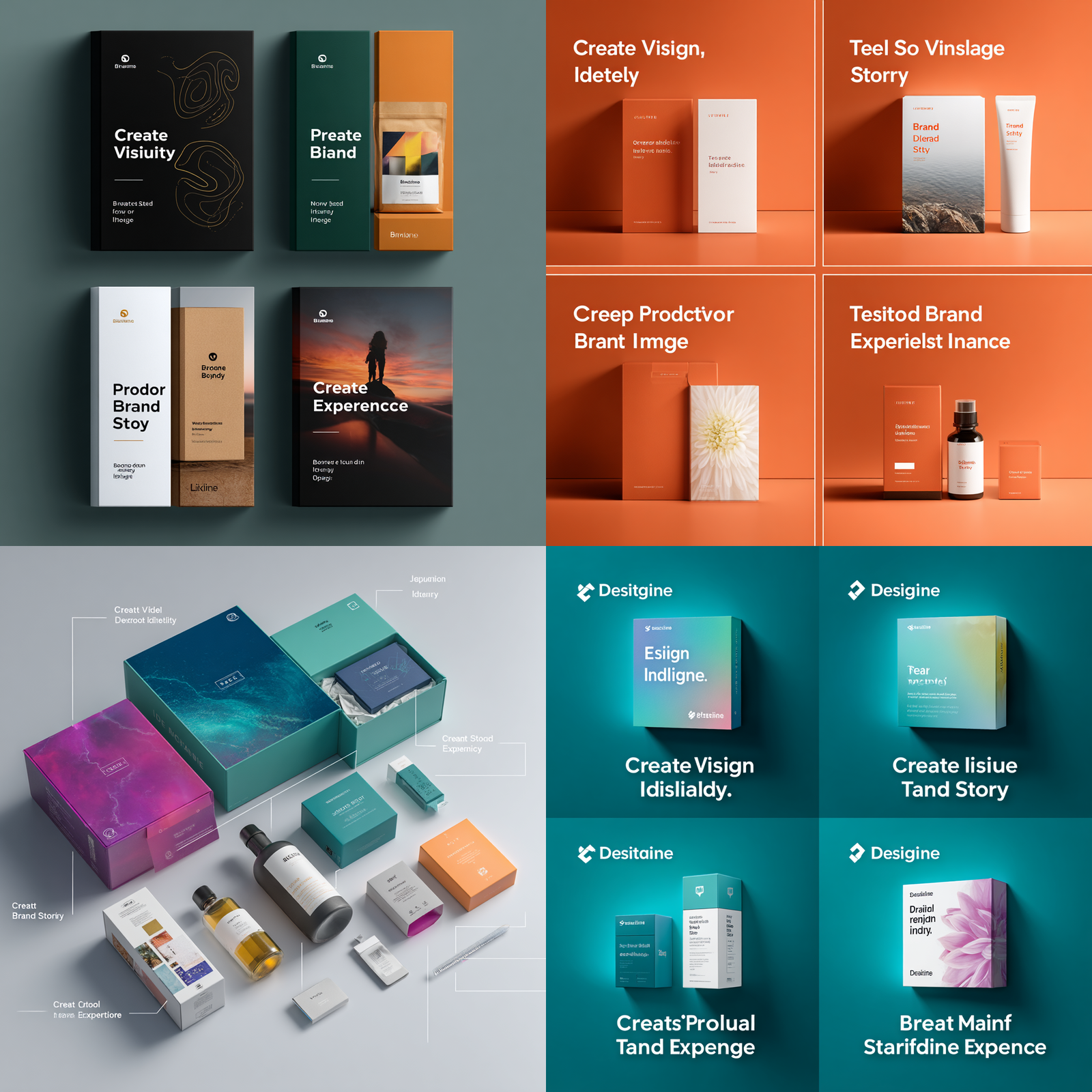 Building a Sales-Oriented Online Store: How to Convert Visitors into Customers?
Building a Sales-Oriented Online Store: How to Convert Visitors into Customers?
A well-designed online store is more than just a product showcase; it’s a 24/7 sales machine. In my experience, even two stores with identical traffic and products can have conversion rates differing by as much as 300%, solely depending on the store’s design and user experience.
Platform Selection and Design Principles: Laying the Foundation for Success
Choosing the right e-commerce platform is the first step to success. This not only affects your initial investment but also influences your future scalability, operational efficiency, and customer experience.
Mainstream Platform Comparative Analysis:
| Platform |
Advantages |
Disadvantages |
Best Suited For |
| Shopify |
High ease of use, rich app ecosystem, professional support |
Higher monthly fees, transaction fees, some features require paid apps |
Beginners, quick launch, need full-featured support |
| WooCommerce |
Highly customizable, one-time cost, no transaction fees |
Higher technical barrier, self-maintenance required, need self-hosting |
Entrepreneurs with technical background, limited budget, need deep customization |
| BigCommerce |
Rich built-in features, SEO-friendly, no transaction fees |
Steep learning curve, high price for advanced features |
Medium-sized businesses with growth expectations |
| Amazon/eBay |
Ready-made traffic, high trust, quick launch |
Fierce competition, many platform restrictions, high commissions |
Validating product ideas, supplementing sales channels |
Shopify is my preferred platform, especially for beginners. Although its basic plan is $29/month, its ease of use and comprehensive ecosystem save entrepreneurs a lot of time and potential error costs.
Design Principles: Simple Yet Powerful
I’ve found that the most successful Dropshipping stores often follow these design principles:
- 1. Simplicity is Key:
- • Clear navigation (max 7 main menu items)
- • Ample white space (avoid visual clutter)
- • Consistent visual hierarchy (headings, subheadings, body text)
- • One clear Call to Action (CTA) per page
- 2. Mobile-First Design:
- • Ensure all features work perfectly on mobile devices
- • Touch-friendly interface (appropriately sized buttons, reasonable spacing)
- • Fast loading speed (image optimization, minimized scripts)
- 3. Strategic Placement of Trust Signals:
- • Payment security badges (on the checkout page)
- • Customer reviews (on product pages)
- • Media mentions and certifications (on the homepage and “About Us” page)
Pro-tip: Don’t over-design your store. I once spent thousands of dollars customizing a gorgeous Shopify theme, only to find its conversion rate was lower than a simple, off-the-shelf theme. The reason? Too many animations and visual elements distracted visitors from the products. Now I use proven conversion-optimized themes (like Turbo or Booster) and only make minimal necessary branding adjustments.
User Experience Optimization: Reduce Friction, Increase Conversion
In Dropshipping, user experience isn’t just about aesthetics; it directly impacts your bottom line. Based on my testing, the following key factors significantly influence conversion rates:
Product Page Optimization:
- 1. High-Quality Visual Content:
- • Multi-angle product photos (at least 5-7)
- • Lifestyle shots (product in actual use)
- • Short video demonstrations (60-90 seconds, showcasing key features)
- • Size comparison charts (help customers understand actual dimensions)
- 2. Persuasive Product Descriptions:
- • Benefit-oriented (not just a list of features)
- • Problem-solving framework (problem – solution – result)
- • Storytelling narrative (create an emotional connection)
- • Use bullet points and short paragraphs (improve scannability)
- 3. Social Proof Integration:
- • Verified customer reviews (with photos or videos)
- • Expert endorsements (if applicable)
- • Use data points (“1000+ units sold,” “4.8/5 star rating”)
I once A/B tested a product page. Simply by restructuring the product description (from a feature list to a problem-solution format) and adding lifestyle photos, the conversion rate increased by 34%. This change cost nothing extra but brought significant revenue growth.
Checkout Process Optimization:
The checkout process is the most critical stage of the conversion funnel and where cart abandonment rates are highest. Here are the best practices I’ve discovered through multiple tests:
- 1. Simplify Checkout Steps:
- • Reduce required fields (only keep absolutely necessary information)
- • Offer guest checkout option (don’t force registration)
- • Progress indicator (clearly show completed and remaining steps)
- 2. Increase Trust Elements:
- • Secure payment badges (at payment information input)
- • Clear links to refund/return policies
- • Customer service contact options (live chat is best)
- 3. Reduce Cart Abandonment:
- • Save cart feature (allow continuation later)
- • Free shipping threshold prompt (“Spend $X more for free shipping”)
- • Exit-intent pop-ups (offer discounts or other incentives)
Pro-tip: Implementing a cart abandonment email sequence is “low-hanging fruit” for increasing conversion rates. The three-email sequence I use (reminder after 1 hour, offer help after 24 hours, provide a discount after 48 hours) recovers an average of 15% of abandoned carts. This achieves significant revenue uplift with almost no extra work.
High-Quality Product Presentation: From Commodity to Must-Have
In Dropshipping, you can’t sell products through a physical storefront or hands-on experience, making product presentation a critical success factor. High-quality product presentation can compensate for the tactile absence of online shopping and reduce perceived purchase risk.
Product Image Optimization Strategies:
- 1. Go Beyond Supplier Images:
- • Order samples and take your own product photos.
- • Use consistent backgrounds and lighting conditions.
- • Show the product compared to common items (for size reference).
- • Macro shots highlighting details and quality features.
- 2. Contextual Display:
- • Real-life usage scenarios (not just white backgrounds).
- • Photos of your target audience using the product.
- • Show the product solving a problem in action.
- • Before-and-after comparisons (if applicable).
- 3. Technical Optimization:
- • Use high-resolution images but optimize file sizes.
- • Implement lazy loading techniques.
- • Enable image zoom functionality.
- • Consider 360-degree spin views (for complex products).
The Art and Science of Product Descriptions:
Product descriptions are not just about conveying information; they are a key part of sales persuasion. I find the most effective product descriptions follow this framework:
- 1. Compelling Headline: Include the main benefit and target audience.
- 2. Emotionally Engaging Opening: Describe a problem or ideal scenario.
- 3. Feature-Benefit Mapping: Immediately follow each feature with the benefit it provides.
- 4. Usage Scenario Description: Specifically explain how the product fits into the customer’s life.
- 5. Technical Specifications: Concise and clear list of specs.
- 6. Social Proof: Selected customer reviews or usage data.
- 7. Risk Reversal: Guarantees, refund policy, FAQs.
- 8. Clear Call to Action: Use urgency or a unique value proposition.
Pro-tip: Create different product description variations for different traffic sources. For example, visitors from Pinterest might be more interested in visual inspiration and creative uses, while visitors from Google search might focus more on specifications and problem-solving capabilities. I use UTM parameters and dynamic content blocks to achieve this personalization, which boosts conversion rates by an average of 12%.
Clear Shipping and Return Policies: Building Purchase Confidence
In Dropshipping, shipping times and return policies are the biggest potential hurdles. Transparent and clear policies not only build trust but also reduce after-sales issues and negative reviews.
Shipping Policy Best Practices:
- 1. Honest Yet Strategic:
- • Provide realistic shipping timeframes (e.g., “12-18 business days” instead of “2 weeks”).
- • Explain why shipping times are longer (e.g., “shipped directly from the manufacturer to ensure the best price”).
- • Offer upgrade options (e.g., paid express shipping).
- 2. Set Reasonable Expectations:
- • Clearly state shipping times in multiple locations (product page, checkout page, FAQ).
- • Provide order tracking information (even if basic).
- • Proactively communicate potential delays (e.g., during holiday peaks).
- 3. Shipping Fee Strategy:
- • Consider incorporating shipping costs into the product price (“free shipping” usually converts better).
- • Set a free shipping threshold (increases average order value).
- • Clearly state international shipping fees and possible customs duties.
Return Policy Design:
A return policy is key to building purchase confidence. My experience shows that a generous return policy, while seemingly risky, can actually increase conversion rates and lower overall return rates.
- 1. Clear Terms:
- • Simple and clear return window (30 days is standard).
- • Specify the required condition of the product.
- • Explain who bears the return shipping cost (ideally, the merchant).
- 2. Simplified Process:
- • Provide a simple return form or online system.
- • Clearly state the refund timeline and method.
- • Consider a “no return required” refund policy (for low-value items).
- 3. Turn Returns into Opportunities:
- • Offer exchange options instead of refunds.
- • Consider partial refunds to retain customers.
- • Use return feedback to improve product selection and descriptions.
Pro-tip: I added a “Shipping & Returns” accordion panel at the bottom of all my product pages, clearly displaying policy highlights. This simple change reduced pre-purchase inquiries by about 40% and increased conversion rates by about 8%. Customers’ purchase confidence significantly improves when they see clear policies.
 Supplier Selection and Management: The Backbone of Your Dropshipping Business
Supplier Selection and Management: The Backbone of Your Dropshipping Business
In Dropshipping, your supplier is essentially your business partner. The quality of your products, shipping speed, and even customer satisfaction are largely dependent on your supplier. Choosing the right supplier and managing that relationship effectively is crucial for long-term success.
How to Find Reliable Suppliers?
Finding a good supplier is like finding a needle in a haystack, but with the right methods, it’s entirely achievable. My experience shows that investing time in supplier research yields the highest ROI.
Key Platforms and Methods for Finding Suppliers:
- 1. AliExpress:
- • Pros: Vast product selection, low MOQ (Minimum Order Quantity), direct contact with manufacturers/distributors.
- • Cons: Highly variable supplier quality, potentially long shipping times, communication challenges.
- • My Strategy: I look for suppliers with:
- • Over 2 years of operational history.
- • Positive feedback ratings above 95%.
- • High “Detailed Seller Ratings” (especially for “Item as Described” and “Communication”).
- • A significant number of orders for the specific product I’m interested in.
- • Responsiveness (reply to inquiries within 24 hours).
- 2. CJ Dropshipping:
- • Pros: Often better product quality and faster shipping than AliExpress, warehousing services, POD options.
- • Cons: Product selection might be smaller than AliExpress, prices can be slightly higher.
- • My Strategy: I use CJ Dropshipping for products where shipping time and quality are paramount, especially for my best-selling items. Their product sourcing service is also very useful for finding items not listed on their platform.
- 3. Specialized Dropshipping Supplier Directories:
- • Examples: SaleHoo, Worldwide Brands, Spocket.
- • Pros: Suppliers are usually pre-vetted, often offer better quality and more reliable service.
- • Cons: Usually require a subscription fee.
- • My Strategy: I use these directories when looking for niche products or suppliers in specific regions (e.g., US or EU based suppliers for faster shipping to those markets).
- 4. Direct Contact with Manufacturers:
- • Pros: Potentially the best prices and customization options.
- • Cons: Higher MOQs, more complex communication and logistics.
- • My Strategy: This is more suitable for established Dropshipping businesses with stable sales volume. Platforms like Alibaba are good for finding manufacturers.
Supplier Vetting Checklist:
Before committing to a supplier, I always go through this checklist:
- 1. Order Samples: This is non-negotiable. Assess product quality, packaging, and actual shipping time.
- 2. Communication Test: Ask detailed questions about the product, shipping, and return policies. Evaluate their responsiveness, professionalism, and English proficiency.
- 3. Check Reviews and Ratings: Look for independent reviews beyond their platform profile if possible.
- 4. Understand Their Fulfillment Process: How quickly do they process orders? What shipping methods do they use? Can they provide tracking numbers promptly?
- 5. Inquire About Branding Options: Can they do blind dropshipping (no supplier branding on packages)? Can they include custom invoices or marketing inserts?
- 6. Negotiate Terms (Gently): Especially if you plan to order in volume later.
Pro-tip: Don’t rely on a single supplier, especially for your best-selling products. I always aim to have at least two vetted suppliers for each key product. This mitigates risks like stockouts, quality issues, or sudden price increases from one supplier.
Effective Supplier Communication and Relationship Management
Treat your suppliers as partners, not just vendors. A good relationship can lead to better service, priority order processing, and even access to new products before your competitors.
Communication Best Practices:
- 1. Be Clear and Concise: Use simple English. Number your questions if you have multiple.
- 2. Be Professional and Polite: Even when issues arise.
- 3. Set Expectations: Clearly communicate your quality standards and shipping time requirements.
- 4. Provide Feedback: Both positive and constructive. This helps them improve and shows you’re a serious partner.
- 5. Use a Consistent Communication Channel: WeChat or Skype are common, in addition to the platform’s messaging system.
Managing Long-Term Relationships:
- 1. Regular Check-ins: Especially if you have consistent order volume.
- 2. Share Your Successes: Let them know how their products are performing in your store.
- 3. Discuss Future Plans: If you’re planning promotions or expecting increased demand, inform them in advance.
- 4. Pay Promptly: This builds trust and goodwill.
Pro-tip: When you find a great supplier, try to build a personal connection. Learn a few basic phrases in their language (if applicable), remember their holidays, or send a small virtual gift for major festivals. These small gestures can go a long way in strengthening the relationship.
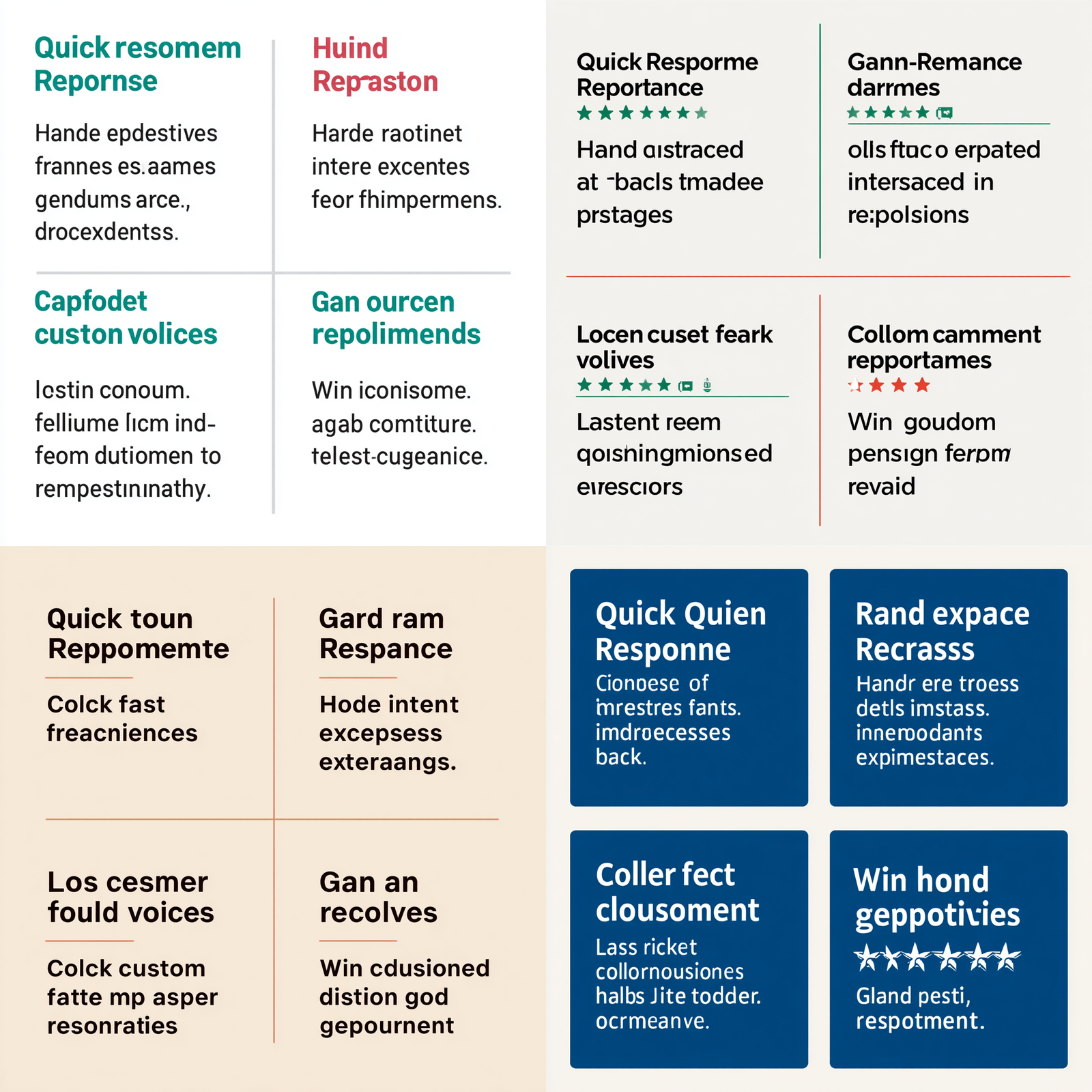 Marketing and Promotion: Driving Traffic and Sales
Marketing and Promotion: Driving Traffic and Sales
You can have the best products and a perfect store, but without traffic, you won’t make sales. Effective marketing is the engine that drives your Dropshipping business.
Diversified Traffic Acquisition Strategies
Relying on a single traffic source is risky. A diversified approach ensures more stable and sustainable growth.
Key Traffic Channels and My Strategies:
- 1. Paid Advertising (PPC):
- • Facebook Ads / Instagram Ads: Excellent for visually appealing products and interest-based targeting.
- • My Strategy: Start with broad targeting to gather data, then narrow down to lookalike audiences based on purchasers and high-engagement users. Carousel ads and video ads usually perform best. Retargeting website visitors who didn’t purchase is crucial.
- • Google Ads: Best for products people actively search for (problem-solving products).
- • My Strategy: Focus on long-tail keywords with high purchase intent. Shopping ads are very effective. Use negative keywords to filter out irrelevant traffic.
- • TikTok Ads: Great for reaching younger audiences with engaging, short-form video content.
- • My Strategy: Content needs to be native to the platform – authentic and entertaining, not overly polished. Spark Ads (boosting organic content) often perform well.
- 2. Search Engine Optimization (SEO):
- • Focus: Long-term, sustainable, free traffic.
- • My Strategy:
- • Keyword Research: Identify relevant keywords for product pages, category pages, and blog content.
- • On-Page SEO: Optimize product titles, descriptions, image alt text, and URLs.
- • Content Marketing: Create valuable blog posts, guides, and how-to articles related to your niche. This not only attracts organic traffic but also builds authority.
- • Link Building: Gradually acquire quality backlinks from relevant websites.
- 3. Social Media Marketing (Organic):
- • Focus: Building a community, brand engagement, driving traffic.
- • My Strategy:
- • Choose 1-2 platforms where your target audience hangs out.
- • Post consistently with a mix of content: product showcases, user-generated content, behind-the-scenes, tips, and engaging questions.
- • Run contests and giveaways to increase engagement and followers.
- • Use relevant hashtags.
- 4. Email Marketing:
- • Focus: Nurturing leads, customer retention, driving repeat purchases.
- • My Strategy:
- • Welcome Series: For new subscribers, introduce your brand and offer an initial discount.
- • Abandoned Cart Emails: Recover lost sales.
- • Promotional Emails: Announce new products, sales, and special offers.
- • Content Newsletters: Share valuable content from your blog to keep subscribers engaged.
- • Segmentation: Segment your list based on purchase history and engagement for more targeted messaging.
- 5. Influencer Marketing:
- • Focus: Reaching new audiences, building trust through endorsements.
- • My Strategy:
- • Focus on micro-influencers (5k-50k followers) in your niche. They often have higher engagement rates and are more affordable.
- • Ensure their audience aligns with your target customer.
- • Negotiate clear deliverables (e.g., number of posts, stories, link in bio).
- • Track results using unique discount codes or affiliate links.
Pro-tip: Always track your marketing efforts. Use UTM parameters for all your campaigns to understand which channels are driving traffic and conversions in Google Analytics. Regularly review your data and adjust your budget and strategy accordingly. Don’t be afraid to cut channels that aren’t performing and double down on those that are.
Customer Service and Reputation Management: The Key to Long-Term Success
In Dropshipping, excellent customer service can be a significant differentiator. Since you don’t control the product or shipping directly, how you handle customer interactions becomes even more critical.
Building an Efficient Customer Service System:
- 1. Clear Communication Channels:
- • Provide an easily accessible email address.
- • Consider live chat for instant support (many Shopify apps offer this).
- • Have a comprehensive FAQ page to answer common questions.
- 2. Prompt Responses:
- • Aim to respond to all inquiries within 24 hours (sooner if possible).
- • Use templates for common questions but personalize them.
- 3. Empathetic and Solution-Oriented Approach:
- • Listen to the customer’s issue carefully.
- • Apologize sincerely if something went wrong (even if it’s the supplier’s fault).
- • Offer clear solutions (refund, replacement, discount on future purchase).
Managing Negative Feedback and Disputes:
Negative feedback is inevitable. How you handle it can turn a dissatisfied customer into a loyal one.
- 1. Respond Publicly (if the review is public) and Privately:
- • Publicly: Acknowledge the issue, apologize, and state that you’ll reach out privately to resolve it. This shows other potential customers you care.
- • Privately: Work with the customer to find a satisfactory solution.
- 2. Don’t Be Defensive: Understand their frustration.
- 3. Learn from Feedback: Use negative feedback to identify issues with your products, suppliers, or processes.
- 4. Proactively Manage Expectations: Clear product descriptions and shipping policies can prevent many issues.
Encouraging Positive Reviews:
Positive reviews are powerful social proof.
- 1. Automated Post-Purchase Emails: A week or two after the estimated delivery date, send an email asking for a review.
- 2. Offer Small Incentives: E.g., a discount on their next purchase for leaving a review (ensure this complies with platform policies).
- 3. Make it Easy: Provide a direct link to the review section.
- 4. Highlight User-Generated Content: Share positive customer photos or videos (with permission) on your social media.
Pro-tip: Implement a system for tracking customer issues and resolutions. This helps you identify recurring problems with specific products or suppliers. For example, if you notice many complaints about the quality of a particular product, it’s time to find a new supplier or remove the product from your store. My rule is: if a product has a return/complaint rate higher than 5-7%, it needs immediate attention.
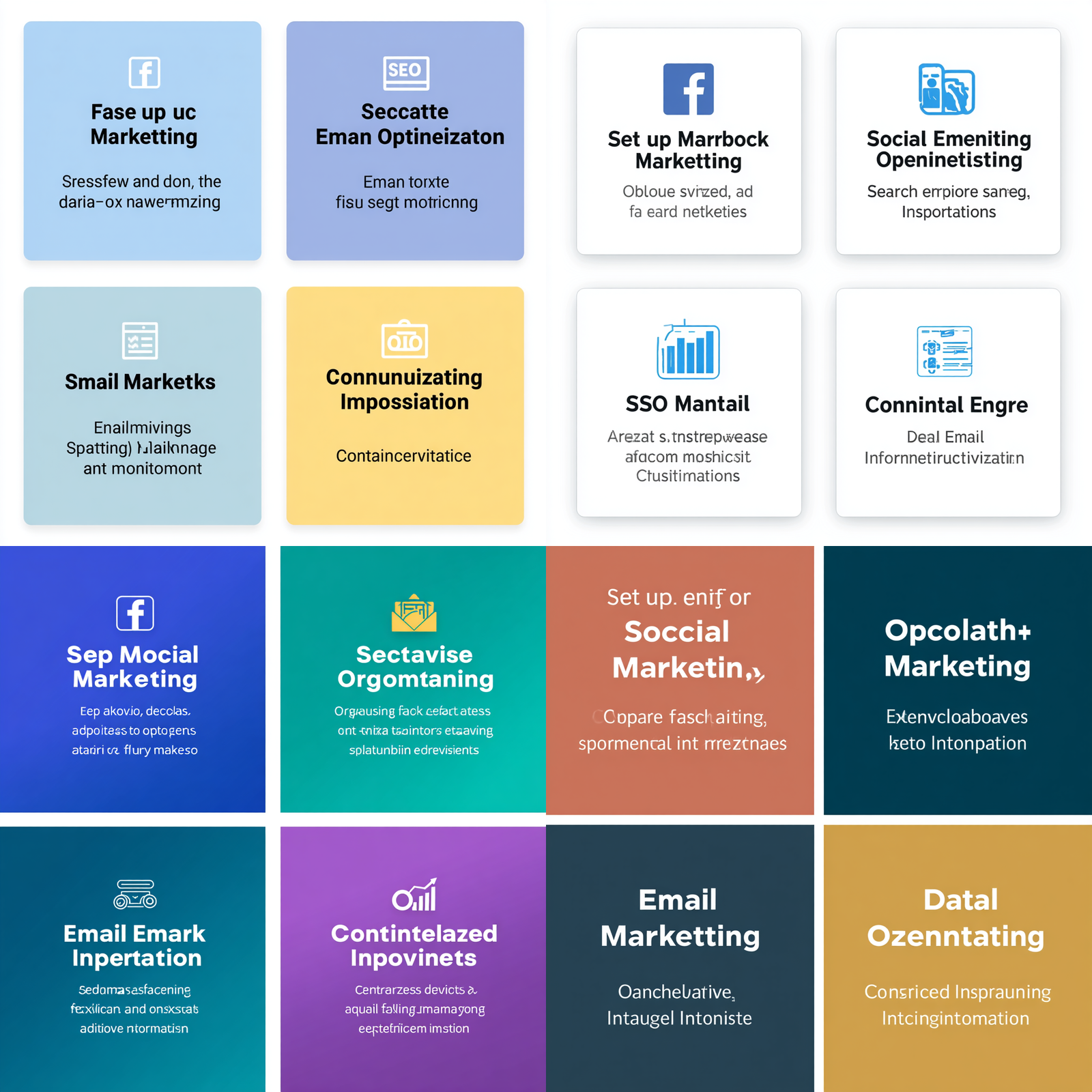 Data Analysis and Continuous Optimization: Turning Insights into Growth
Data Analysis and Continuous Optimization: Turning Insights into Growth
In the dynamic world of e-commerce, what you don’t measure, you can’t improve. Data analysis is not just for large corporations; it’s an essential tool for every Dropshipping entrepreneur aiming for sustainable growth. Continuous optimization based on data-driven insights is what separates thriving businesses from stagnant ones.
Key Metrics to Track (KPIs)
Don’t get lost in a sea of data. Focus on Key Performance Indicators (KPIs) that directly reflect the health and progress of your business.
My Essential Dropshipping KPIs:
- 1. Website Traffic:
- • Overall Sessions/Users: How many people are visiting your store?
- • Traffic Sources: Where are they coming from (e.g., organic search, social media, paid ads)? This helps you understand which marketing channels are effective.
- • Tools: Google Analytics
- 2. Conversion Rate (CR):
- • Formula: (Number of Sales / Number of Visitors) * 100%
- • Importance: Measures how effectively your store turns visitors into customers. Even a small increase can significantly impact revenue.
- • My Target: Aim for at least 2-3%. Top stores can achieve 5% or higher.
- 3. Average Order Value (AOV):
- • Formula: Total Revenue / Number of Orders
- • Importance: Increasing AOV means each customer is spending more.
- • Strategies to Increase AOV: Product bundling, upselling, cross-selling, free shipping thresholds.
- 4. Customer Acquisition Cost (CAC):
- • Formula: Total Marketing Spend / Number of New Customers Acquired
- • Importance: How much does it cost to get a new customer? This needs to be lower than your Customer Lifetime Value (CLTV) for profitability.
- 5. Customer Lifetime Value (CLTV):
- • Formula (Simplified): Average Purchase Value * Average Purchase Frequency * Average Customer Lifespan
- • Importance: The total revenue you can expect from a single customer account. A high CLTV allows for higher CAC.
- • Strategies to Increase CLTV: Excellent customer service, loyalty programs, email marketing for repeat purchases.
- 6. Cart Abandonment Rate:
- • Formula: (1 – (Completed Purchases / Carts Created)) * 100%
- • Importance: High rates indicate issues in your checkout process or unexpected costs.
- • My Target: Aim for below 60-70%.
- • Tools: Most e-commerce platforms (Shopify, WooCommerce) provide this data.
- 7. Return on Ad Spend (ROAS):
- • Formula: Revenue Generated from Ads / Cost of Ads
- • Importance: Measures the profitability of your advertising campaigns.
- • My Target: Aim for at least 3-4x, but this varies by niche and profit margin.
- 8. Profit Margin:
- • Net Profit Margin: (Net Profit / Total Revenue) * 100%
- • Importance: The ultimate measure of your business’s profitability after all expenses.

Tools and Techniques for Data Analysis
You don’t need to be a data scientist to analyze your Dropshipping performance.
- 1. Google Analytics: Essential for website traffic, user behavior, conversion tracking, and audience insights. Set up e-commerce tracking.
- 2. E-commerce Platform Analytics: Shopify, WooCommerce, etc., have built-in dashboards showing sales, orders, AOV, conversion rates, and top products.
- 3. Advertising Platform Analytics: Facebook Ads Manager, Google Ads Dashboard provide detailed performance data for your campaigns (reach, clicks, conversions, ROAS).
- 4. Email Marketing Platform Analytics: Tools like Mailchimp or Klaviyo show open rates, click-through rates, and conversion rates for your email campaigns.
- 5. Spreadsheets (Google Sheets, Excel): Useful for consolidating data from different sources, calculating custom metrics, and tracking trends over time.
My Data Review Rhythm:
- • Daily: Quick check of sales, ad performance, and any urgent customer issues. (15-30 minutes)
- • Weekly: Deeper dive into website traffic, conversion rates by channel, top-performing products, and ad campaign optimization. (1-2 hours)
- • Monthly: Review overall financial performance, profit margins, CLTV vs. CAC, and strategic adjustments. (2-4 hours)
A/B Testing for Continuous Improvement
A/B testing (or split testing) is the process of comparing two versions of a webpage, ad, or email to see which one performs better. This is a cornerstone of data-driven optimization.
What to A/B Test:
- • Product Page Elements: Headlines, product descriptions, images, call-to-action buttons (text, color, placement).
- • Pricing Strategies: Different price points, discount offers.
- • Ad Creatives: Images, videos, ad copy, headlines.
- • Landing Pages: Different layouts, offers.
- • Email Subject Lines and Content.
- • Checkout Process: Number of steps, form fields.
A/B Testing Best Practices:
- 1. Test One Variable at a Time: If you change multiple things, you won’t know what caused the difference in performance.
- 2. Have a Clear Hypothesis: What do you expect to happen and why?
- 3. Ensure Sufficient Sample Size and Duration: Don’t conclude tests too early. Use an A/B test significance calculator.
- 4. Track the Right Metrics: Focus on the metric that matters for that specific test (e.g., conversion rate for a product page test, click-through rate for an ad creative test).
- 5. Implement Winners, Learn from Losers: Even a “losing” test provides valuable insights.
Tools for A/B Testing:
- • Google Optimize (free, integrates with Google Analytics)
- • VWO, Optimizely (paid, more advanced features)
- • Many e-commerce platforms and email marketing tools have built-in A/B testing features.
Pro-tip: Start with A/B tests that can have the biggest impact. For example, optimizing your product page CTA or your main ad creative is likely to yield more significant results than changing the color of a minor button on your “About Us” page. I once increased my store’s overall conversion rate by 0.5% (which translated to thousands in monthly revenue) just by A/B testing different headlines on my best-selling product pages.
Final Words from the Author
We’ve journeyed together through the comprehensive landscape of Dropshipping, from understanding its core concepts and choosing the right platforms, to building a unique brand, attracting customers, optimizing your store for sales, managing suppliers, and leveraging data for continuous growth.
Dropshipping is not a get-rich-quick scheme. It requires dedication, strategic thinking, continuous learning, and resilience in the face of challenges. The statistics I shared at the beginning – that many novices give up – are a testament to this. However, armed with the knowledge and strategies in this guide, you are now far better equipped than most who embark on this path.
The beauty of Dropshipping lies in its accessibility and the unparalleled opportunity it offers to build a global business from virtually anywhere. China’s robust supply chain, combined with the ever-expanding global e-commerce market, creates a fertile ground for entrepreneurs like you.
My dream, as I mentioned, is to see more individuals successfully leverage these opportunities. The principles shared here are not just theories; they are distilled from years of hands-on experience, countless experiments, and both successes and failures.
Your Next Steps:
- 1. Re-read and Absorb: Go through this guide again. Take notes. Identify the areas most relevant to your current stage.
- 2. Take Action: Knowledge without action is powerless. Start implementing. Even small steps forward build momentum.
- 3. Embrace Learning: The e-commerce world is constantly evolving. Stay curious. Follow industry blogs, join communities, and never stop learning.
- 4. Be Persistent: You will encounter obstacles. There will be slow days. The key is to learn from setbacks and keep moving forward.
- 5. Focus on Value: Ultimately, business is about providing value to your customers. Focus on understanding their needs and exceeding their expectations.
I sincerely hope this guide serves as a valuable roadmap for your Dropshipping journey. The path to building a successful e-commerce brand is challenging, but incredibly rewarding. With the right mindset, strategies, and a commitment to excellence, you can achieve your entrepreneurial aspirations.
I wish you the very best in building your own thriving Dropshipping business and creating the future you envision.
To your success,
Janson
CEO, ASG Dropshipping